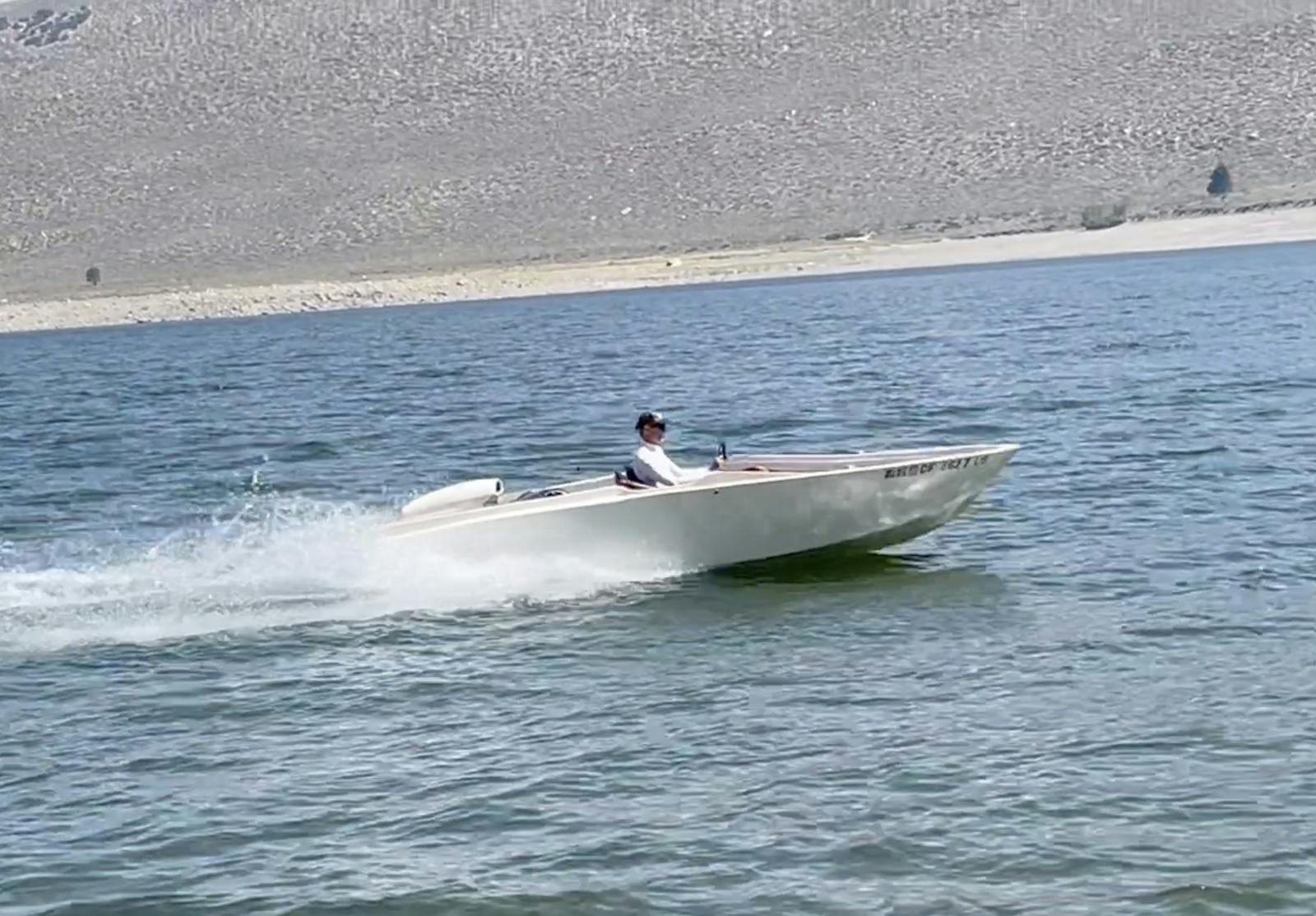Media | Articles
Bugbite boat is much more than a tongue twister
In a car-dominated collector community where the words “replica,” “tribute,” and “continuation” generally refer to automobiles, Kevin Fitzke has introduced Bugbite, a stunning wooden race boat built using an 85-year-old design by A.A. Apel of Ventnor Boat Works.
Never heard of A.A. Apel? Neither had Fitzke until he discovered Apel’s design plans about four years ago while browsing through a 1935 issue of Motor Boating Magazine.
“The boat was originally named Zephyr,” Fitzke says. “The plans were published in the magazine to help promote boat racing and general boat building at the time. There’s actually an entire series of books, called the Motor Boating Ideal Series, that has tons of build plans for every type of boat.
“I really loved the esthetic design of the Zephyr boat, plus it’s a rather small boat, so it was easy to manage in my shop and work on myself.”
Marketplace
Buy and sell classics with confidence
20200312185521)
Fitzke, owner of Fitzke Boatworks (formally Fitzke Paddle Board Co.), has been building boats since he was a kid growing up in Apple Valley, Minnesota, about 20 miles south of Minneapolis. He said he caught the woodworking bug from his father, but he isn’t sure where his love for classic wooden boats comes from, since his family never owned one. Perhaps it was just a natural progression, since the Fitzke clan had a small fiberglass sailboat and Kevin’s grandparents owned a pontoon boat and a small fishing boat.
“My dad had a huge influence on me, in terms of just wanting to learn how to make things,” Fitzke says. “My biggest inspiration [as a boat builder] is the Golden Era of boats and designers from the 1920s–30s, guys like George Crouch, John Hacker, and William Hand Jr. I started out making my own models, both static and radio control, just by studying photos, plans, and teaching myself lofting and basic naval architecture.”
Fitzke started crafting paddle boards about four years ago as “just another excuse to design and build wooden boats.” His first true test as a boat builder came last year, when he began constructing Bugbite from the ground up. It’s a single-step boat, which, Fitzke explains, means “it has a step, usually close to the center of buoyancy on the hull… which creates a pocket of air that it rides on, reducing the wetted surface and increasing the overall speed of the boat.”
The 17-foot racer is a modern build with modern materials and techniques, but it has unmistakable classic charm.
20200312185320)
20200312185358)
20200312185353)
Fitzke did everything himself, from the woodworking—using marine-grade mahogany and white oak—to varnishing, painting, gold-leafing/lettering, mechanical work, and hand-forming the aluminum windshield frame, air scoop, and trim pieces. “It’s been an absolute dream of mine,” he says. “Something that I thought about all the time.”
Transitioning from building paddleboards to building boats wasn’t as difficult as it might seem, Fitzke says, because many of the materials and techniques are the same for both—except, of course, how each of them is powered. Bugbite is driven by a rebuilt GM 283-cubic-inch engine that produces about 190 horsepower. It’s mated to a Borg Warner hydraulic manual gearbox. Since Bugbite weighs only 1400 pounds, that’s mo
re than enough power to blow your hair back.
The boat wears the letter-number combination F-36, with F signifying its pre-war 225-cubic-inch race class and 36 indicating Fitzke’s age when the boat was finished.
Speaking of finished, Fitzke isn’t. Not by a long shot.
“I have two new boat designs that I just started,” he says. “The first is my own design, a 21-foot gentleman’s racer that’s based on a rare John Hacker bottom design. It will seat four and be powered by a hopped-up GM 350 engine.
20200312185538)
“The second is a two-seat little racer that’s inspired by the 151- and 215-cubic-inch race-class boats from the mid-1920s. It’s an open deck design and will be powered by an all-aluminum Buick 215-cubic-inch engine with a V-drive gearbox.”
Fitzke uses AutoCAD computer software, as well as a hand-held CNC machine to cut the frame parts out of white oak. “My guideline,” he says, “is to use the latest technology in materials and fabrication techniques but keep the true vintage esthetic.”
Mission accomplished, certainly when it comes to his first creation. Speaking of which, where does the name Bugbite come from, anyway? “Once you’re bit by the boat bug,” Fitzke says, “you’re hooked.”
He should know.
20200312185556)








20200312185310)
20200312185329)
20200312185335)
20200312185340)
20200312185347)
20200312185408)
20200312185501)
20200312185508)
20200312185515)
20200312185530)
20200312185547)

